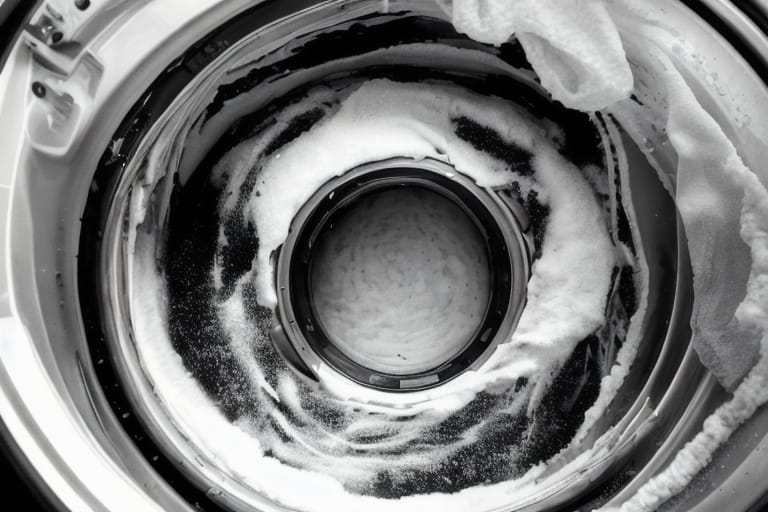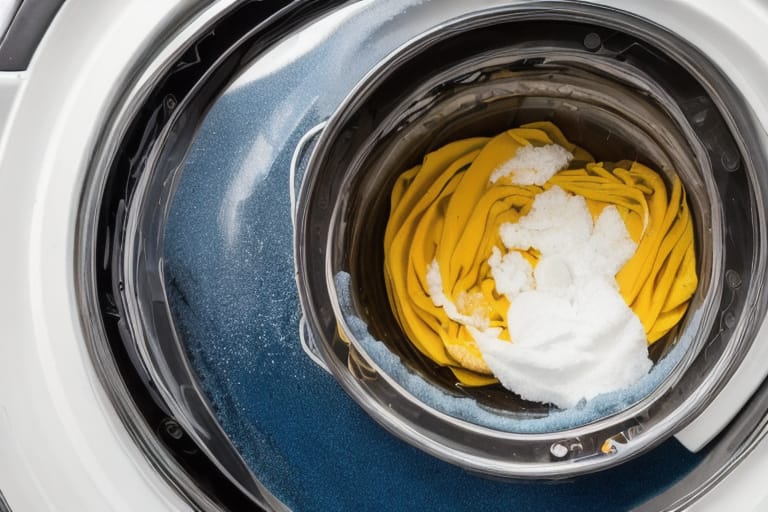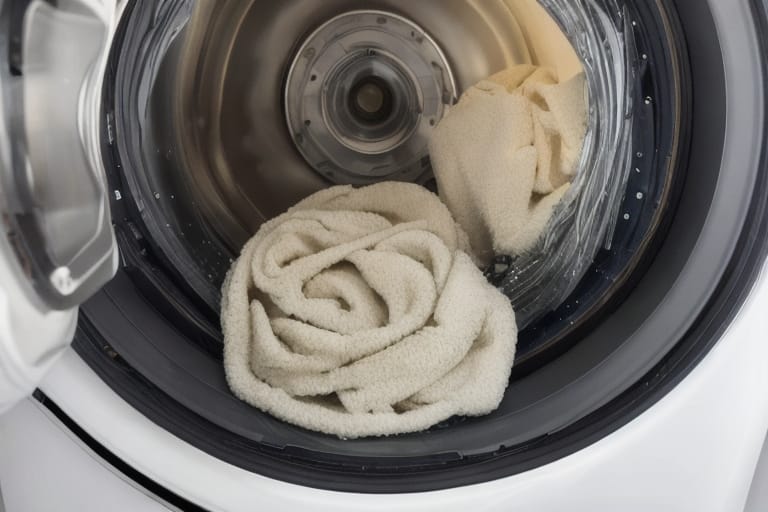Do you love snuggling up with your down-filled comforter on chilly nights, only to catch a whiff of a musty odor when you climb into bed? If your down comforter smells, you’re not alone. The makeup of down filled bedding makes it prone to holding onto odors over time. But don’t worry – with the right cleaning methods, storage solutions, and regular maintenance, you can keep your down comforter fresh.
This beginner’s guide will teach you everything you need to know about eliminating smells from your down comforter, from understanding common causes of odors to learning professional and DIY cleaning techniques. We’ll also provide tips for preventative care so you can stop smells before they start. Read on to give your comforter the refresh it needs!
What Causes Down Comforters to Smell
Before learning how to make your down comforter smell fresh and clean, it helps to understand what makes it stinky in the first place. Here are some of the most common culprits of odor in down bedding:
Body Oils and Sweat: Oil, sweat, and dirt from your body can transfer from your skin to the fabric, creating food for odor-causing bacteria.
Mildew and Mold: Excess moisture inside the comforter allows mold and mildew growth leading to that typical musty smell. This often happens if drying is inadequate after washing.
Bacteria and Dust Mites: These microscopic bugs feast on feathers and dirt inside the comforter, causing foul odors.
General Use Over Time: Years of use without proper cleaning allow stains, soils and odors to build up.
Proper cleaning and care is key to preventing and eliminating these offenders. Now let’s explore methods for washing, drying, and freshening up your down-filled bedding.
Cleaning a Smelly Down Comforter
When it comes to cleaning comforters filled with delicate down, throwing them in the washing machine with harsh detergents can damage the feathers. We’ll review specialized techniques below for safely and effectively washing down bedding.
Washing Methods
Here are some key tips to follow when machine washing your down comforter at home:
- Use a Front-Loading Washing Machine: The gentler agitation of front-load washers is best for down-filled items. Top-loaders can be too rough.
- Wash on a Gentle Cycle Setting: Choose the delicates or gentle/light soil setting. Lower water levels are also preferable.
- Wash with Mild Detergent: Skip the conventional laundry detergents, bleaches and fabric softeners, which can strip natural oils from down. Instead use a mild soap formulated for down, such as Down Wash Laundry Detergent by Nikwax.
- Pre-treat Stains: Use a stain-removal stick on problem areas before washing. Check manufacturer instructions first.
- Air Dry: Tumble drying can damage feathers. Air dry your comforter instead. (More drying tips below!)
By following these specialized care steps, you can safely clean your down bedding without causing excess wear.
Pros and Cons of Washing Down At Home
| Pros | Cons |
|---|---|
| Cost effective | Time consuming process |
| Convenience of home cleaning | Potential for damage if done improperly |
| Control over detergents used | Difficulty of drying large comforters |
Stain Treatment and Pre-Washing
For best results, pre-treat any visible stains on your down comforter prior to washing. Here’s how:
- Apply a laundry stain removal stick directly to the affected area. Follow manufacturer’s instructions based on stain type.
- Gently rub the stick over stain and let sit 5-10 minutes. The oxy-powered formula helps lift stains before washing.
- Use a soft brush or old toothbrush to lightly scrub stained area, being cautious not to damage fabric or down fill.
Pre-treating stains this way keeps them from setting further so washing can remove smells and soils more effectively. Skipping this pre-treatment step can lead to permanent staining and odor buildup over time.
Drying Methods for Down Comforters
Proper drying is just as crucial as washing when it comes to combatting odors in down bedding. Leaving moisture behind invites mold and mildew growth which worsens smells quickly.
Below we compare suitable techniques for fully drying a down comforter after washing it.
Air Drying
This traditional method avoids potential damage from mechanical drying methods.
- Hang comforter outdoors on a clothesline if possible to allow fresh air circulation. Indoors, use a folding rectangular laundry rack.
- Make sure the comforter is evenly arranged to allow airflow to all areas. Shake and rearrange periodically.
- This process can take 1-2 days if air drying indoors. Provide fans to help facilitate drying.
- Avoid direct sunlight to prevent fading of fabrics.
Benefits: Natural, safe for down, prevents heat damage from dryers. Avoid stressing delicate feathers.
Drawbacks: Very time consuming. Limited weather dependence for outdoor drying. Can allow mildew growth if humidity is too high, or drying is uneven.
Low Heat Drying
If line drying isn’t possible, a clothes dryer may be used minimally with extreme care taken.
- Dry the comforter alone without other laundry to prevent overloading dryer.
- Use lowest heat setting only (delicate or air fluff). High heat damages down fill.
- To save time, run dryer for just 10-15 minutes then air dry remainder of the way.
- Add a couple tennis balls to the dryer to help redistribute fill and improve fluffiness.
- Inspect periodically for fully dried fill and to check for clumping. Stop immediately if any signs heat damage.
This brief low heat jump start can help initiate drying if air methods aren’t practical based on weather, humidity and seasonal limitations. But extended tumble drying is never recommended for down-filled items due to risks of fill damage.
Which drying method is best may depend on your climate, living space and time constraints. In most cases air drying proves safest for protecting your comforter long-term although it tests your patience. Understanding proper care guidelines allows you to make the most suitable choice.
DIY Freshening Methods
In between washes, there are some simple at-home remedies you can apply to freshen up a musty down comforter, reduce odors naturally, and extend time between deep cleanings. Give these tricks a try:
Vinegar Freshening: Mix 1 cup white distilled vinegar per 1 gallon of water in a spray bottle. Lightly mist over comforter, allow to sit 5 minutes, then air dry. Vinegar kills bacteria that causes odors without harsh chemicals and leaves a light clean scent.
Baking Soda Deodorizing: Liberally sprinkle baking soda over the comforter surface. Let sit for minimum 30 minutes up to 24 hours if needed for stronger odors. The baking soda will help absorb foul smells. Vacuum off the powder once finished.
Lemon Juice and Salt: Combine lemon juice from 2 lemons with 1⁄2 cup salt in a spray bottle filled with 1 liter water. Shake then spray over comforter and let solution set for 1 hour before air drying. The citrus freshens the fabric.
Try alternating between these homemade odor elimination solutions as needed when smells resurface between wash cycles. They offer gentle, eco-friendly cleaning for your down bedding.
Homemade Freshener Solutions
| Method | Supplies Needed | Benefits |
|---|---|---|
| White Vinegar Spray | – 1 cup vinegar – Water – Spray bottle | – Disinfectant properties – Removes odors |
| Baking Soda Sprinkle | – Baking soda – Vacuum | – Absorbs and neutralizes odors – Loosens clustered down fill |
| Lemon Juice Mix | – 2 lemons – 1⁄2 cup salt – 1 liter water – Spray bottle | – Natural citrus scent – Antibacterial qualities |

Professional Cleaning Services
While regular at-home washing, drying and freshening can effectively clean down comforters, occasionally sending them to a professional may become necessary, especially if odor issues persist.
You have two options for professional cleaning: dry cleaning or wet cleaning. Here’s how they compare:
Dry Cleaning: Uses chemical solvents to lift soils rather than water. Considered gentler for feathers than washing. Special ‘down-safe’ solutions available.
- Pros: Less agitation of fill compared to wet washing. Cons: Harsher chemicals can damage down over multiple cleanings. Expense adds up. Environmental impact.
Wet Cleaning: Computer-controlled washers allow delicate fabric-safe cleaning with water. Detergents made for down. Extensive drying process.
- Pros: Eco-friendly compared to dry cleaning. Cons: Most expensive option. Must trust provider has proper equipment for down.
Reputable professional cleaners should thoroughly wash and dry down comforters according to stringent industry standards to restore freshness and loft. This intensive process tackles tough odors that periodic home launderings may miss.
Manufacturer’s Tags on your comforter may specify dry clean only. But wet cleaning is actually recommended over solvent-based methods for down bedding when done properly by down care experts.
Professional Down Comforter Cleaning Pricing
| Cleaning Method | Average Cost | Frequency Recommended |
|---|---|---|
| At-Home Washing | $0 plus supplies | 1-2 times per year |
| Dry Cleaning | $50 – $100 | As needed basis only |
| Wet Cleaning | $100 – $200 | Every 2-3 years |
Sending your comforter for professional cleaning every few years supplements your regular home care for optimal upkeep.
Storing to Prevent Odors
Proper storage between uses helps down comforters stay fresh longer:
*● Allow to fully air dry before storing to prevent moisture buildup.. ● Refrain from using plastic bins or vinyl bags which trap humidity. ● Store in breathable cotton or mesh garment bag. Allow airflow. ● Lay flat if possible. Folding can overly compress feathers.
Follow washing and freshening guidelines in this article before storage to eliminate any lingering smells. A clean start prevents odors from growing in confinement.
Advanced Odor Removal Tips
Let’s explore targeted recommendations for handling two common yet tricky down comforter stenches:
Wet Dog Smell
We love our furry friends, but that characteristic wet dog aroma tends to stick to fabrics. To kick this funky odor off your down comforter:
● Spot clean affected area ASAP once smell is noticed._ Quick action prevents odor from setting in._
● Liberally spray white vinegar over smell spots. Vinegar kills odor-causing bacteria.
*● Allow vinegar solution to soak 15-30 minutes to neutralize smell before air drying.
**● Wash entire comforter soon after spot treatment for most effective elimination.
Following up with a complete wash ensures any remaining traces of wet dog smell get kicked to the curb.
Musty Smell
Nothing ruins down comforter snuggles like getting hit with an unpleasant whiff of mildew. Mustiness develops from moisture buildup inside the fill. Combat this moldy odor with two go-to remedies:
● Sprinkle baking soda generously over the entire comforter surface and allow to sit overnight, giving the powder time to absorb the maximum amount of odor.
● Make a vinegar cleaning solution of 1-part vinegar to 3 parts water. Lightly mist over comforter then allow to air dry. The acidic vinegar inhibits mold and mildew growth responsible for musty stenches.
Repeat these absorption and disinfectant treatments as needed until the moldy smell completely disappears. Be sure to fully dry comforter before using or storing.
When it comes to eliminating every type of funky odor from your down comforter – wet dog, musty mildew, general stink – vinegar and baking soda offer two super effective, natural cleaning solutions for the job.
Chemical vs. Natural Cleaning Agents
Removing stubborn smells from down comforters sends many reaching for harsh chemical cleansers in pursuit of hygiene. However, home remedies offer a safer, eco-conscious alternative. Let’s compare:
Chemical Cleaners
Pros: Powerful at removing stains and odors, convenient commercially prepared solutions.
Cons: Toxic fumes, skin irritants, damage down fill long-term, environmental impact disposing of chemicals.
Natural Cleaners
Pros: Non-toxic, affordable household ingredients, better for environment, gentle on delicate down.
Cons: Require more hands-on preparation, may need repeat applications compared to strong chemical cleaners.
While commercial cleaners efficiently eliminate odors, natural approaches help refresh down comforters without risky chemicals. And adding vinegar or baking soda to your regular cleaning routine helps maintain freshness between washes.
Takeaways: Keeping Down Comforters Smelling Fresh
Caring properly for down comforters requires specialized cleaning methods compared to other bedding due to the delicate feather construction. By understanding what causes odors, learning the right washing techniques, and properly drying and storing, you can eliminate funky smells and keep your down bedding fresh for years to come.
To recap, focus on these areas:
● Use front-loading washers on gentle cycle with mild detergents
● Fully air dry down comforters whenever possible
● Refresh in-between washes using vinegar and baking soda
● Send to professional down cleaner every 2-3 years
● Allow to fully dry before storage in breathable cotton bags
● Address wet dog smell and musty odors quickly with vinegar solutions
● Opt for natural cleaning agents instead of harsh chemicals
Follow these best practices for cleaning and caring for your down-filled bedding. Then relax and enjoy the warmth and comfort of your refreshed, odor-free comforter for seasons to come!

Frequently Asked Questions
How often should you wash down comforters?
Wash down comforters at home every 1 to 2 years. Seasonal use and personal preference dictates exact timing. Use fabric refreshers in-between washes as needed. For optimal upkeep, send comforters to a professional down cleaner every 2-3 years to deep clean what home washing may miss.
Can I put my down comforter in the dryer?
Avoid putting down comforters in the dryer whenever possible to prevent damage to delicate inner fill that can degrade fluffiness over time. If air drying isn’t possible, use the lowest heat setting for just 10-15 minutes to partially dry, continuing to air dry the remainder of the way. Add tennis balls to help redistribute fill. Inspect carefully and stop immediately if signs of clumping appear.
Why does my down comforter get lumpy?
Improper drying causes the stitch lines in down comforters to pull inward, creating unpleasant thin spots and compacted lumps in the fill. Always air dry thoroughly after washing. If machine drying, use extremely low heat for very short intervals only, around 10 minutes. Add tennis balls to help break up lumps, then redistribute fill by manually shaking.
How do I get dog smell out of my down comforter?
That familiar wet dog odor can prove tricky to remove from feather-filled items. Treat problem spots immediately by spraying with distilled white vinegar. Allow vinegar to penetrate 15-30 minutes before air drying. Follow up by washing entire comforter soon after spot cleaning for most effective elimination. Vinegar solutions help destroy the bacteria causing the stubborn funky smell.
What gets musty smell out of comforters?
Baking soda and white vinegar make two of the best home remedies for removing *musty, mildewy odors from the down fill. Generously sprinkle baking soda over the entire comforter and allow the powder to sit overnight before vacuuming away. The soda helps absorb moisture that feeds odor-producers. Spritzing lightly with a vinegar-water solution helps inhibit future mold, mildew and bacteria growth.








